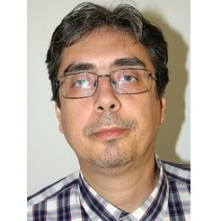Effects of Airborne Particulate Matter on Human Health in Urban Environments
A special issue of Atmosphere (ISSN 2073-4433). This special issue belongs to the section "Air Quality and Human Health".
Deadline for manuscript submissions: closed (30 September 2019) | Viewed by 6535
Special Issue Editor
Interests: environmental monitoring; ecophysiology; crop growth modelling; climate change impact; geospatial analysis; sensing
Special Issues, Collections and Topics in MDPI journals
Special Issue Information
Dear Colleagues,
Future major challenges in the development of society will soon occur due to intensive urbanization. The latest global scenarios estimate that poor air quality and population growth in urban areas will become the main environmental health risk factors in the coming decades, significantly influencing the morbidity and mortality levels of inner city residents, and consequently the development of society.
One of the most important health stressors related to air quality is particulate matter (PM), resulting mainly from industrial, traffic and domestic heating emissions. The human health effects associated with airborne PM pollution can include nausea, difficulty breathing, skin irritation, cancer, birth defects, significant developmental delays in children, and reduced activity of the immune system, which may lead to a number of acute or chronic diseases. The Special Issue seeks to condense knowledge of these health effects (symptoms and diseases) and to summarize the recent data on effect strength (research articles and topical systematic reviews). It may support the identification of knowledge gaps and help to take research in a new direction for better quality of life in urban environments. There is evidence that a long-term reduced level of PM results both in health benefits and in reduced national health costs (e.g. improving life expectancy, and diminished hospitalizations and associated treatment).
We invite papers on the following topics:
- PM health effects and effect strength (focus on epidemiologic studies) in various vulnerable groups (newborns, infants, pupils, adolescents, elders, and sensitive people).
- Assessment of urban residents exposure to PM (depending on country, living conditions, indoor, outdoor, etc.).
- Sick building syndrome, PM and health effects.
- PM health effects related to pathogenesis (e.g. inflammatory path ways, oxidative stress, genotoxicity) and research on pathogenesis.
- Cellular responses and biomarkers related to PM exposure.
- Effect strength of different types of particles (fine, coarse, ultrafine/chemistry/particle mass vs. particle number, particle morphology).
- Potentially mutagenic airborne particles as carriers of condensed semi-volatile and non-volatile organic compounds.
- Long-term and short term health effects (with respect to exposure and the effects themselves)
- Modeling and forecasting of PM health effects, costs or risks.
Dr. Daniel Dunea
Guest Editor
Manuscript Submission Information
Manuscripts should be submitted online at www.mdpi.com by registering and logging in to this website. Once you are registered, click here to go to the submission form. Manuscripts can be submitted until the deadline. All submissions that pass pre-check are peer-reviewed. Accepted papers will be published continuously in the journal (as soon as accepted) and will be listed together on the special issue website. Research articles, review articles as well as short communications are invited. For planned papers, a title and short abstract (about 100 words) can be sent to the Editorial Office for announcement on this website.
Submitted manuscripts should not have been published previously, nor be under consideration for publication elsewhere (except conference proceedings papers). All manuscripts are thoroughly refereed through a single-blind peer-review process. A guide for authors and other relevant information for submission of manuscripts is available on the Instructions for Authors page. Atmosphere is an international peer-reviewed open access monthly journal published by MDPI.
Please visit the Instructions for Authors page before submitting a manuscript. The Article Processing Charge (APC) for publication in this open access journal is 2400 CHF (Swiss Francs). Submitted papers should be well formatted and use good English. Authors may use MDPI's English editing service prior to publication or during author revisions.
Keywords
- PM fractions
- diseases
- symptoms
- exposure
- particle mass
- particle number
- particle morphology
- PM speciation
- sensitive groups





